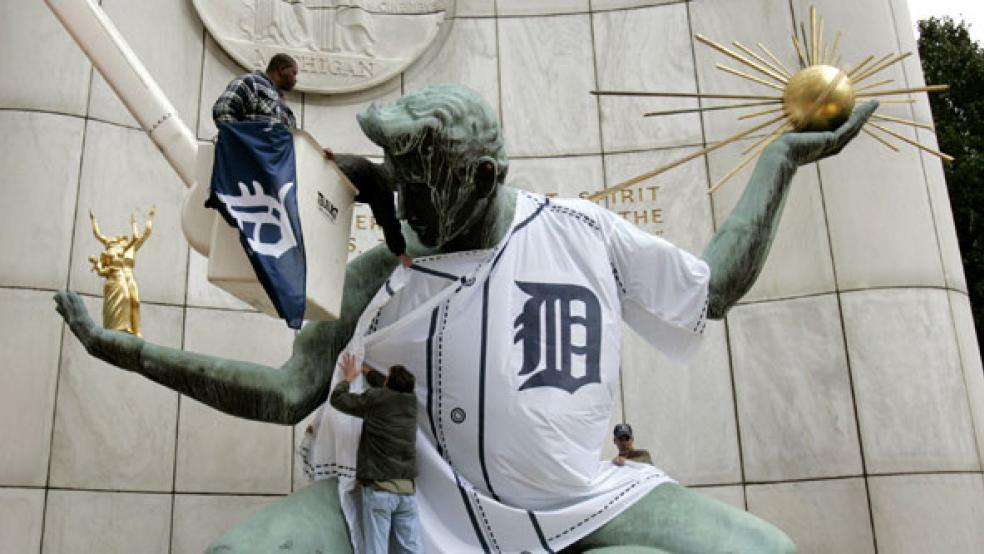While King Juan Carlos of Spain has offered to give up his 136-foot yacht and French President Francois Hollande just raised $390,000 by selling 1,200 bottles of fine wine from the Élysée Palace cellars in a European-style show of austerity, that’s nothing compared to the “crown jewels” that financially crippled Detroit may have to give up if the Motor City goes into bankruptcy.
Detroit’s emergency manager, Kevyn Orr, has ordered an evaluation of everything owned by the city, including the great masterpieces of the renowned Detroit Institute of Art, the giraffes and other popular animals at the Detroit Zoo, and even the 983-acre island Belle Isle, a popular recreation, boating and events venue on the Detroit River that hosted a Grand Prix Indy Car race over the weekend.
Orr was installed by Republican Gov. Rick Snyder in March to oversee the city’s finances and seek a way of coping with debts totaling $15 billion to $17 billion and future pension and health insurance obligations. Orr’s team says they want to evaluate everything owned by the city as they begin negotiating with creditors – and determine whether to take the city into bankruptcy.
At this point it’s hard to discern just how serious Orr is about placing some of the greatest art in history on the auction block to help pay off the city’s numerous creditors. The museum on Woodward Avenue in downtown Detroit consists of 100 galleries and 65,000 pieces of art with work that comes from every continent and time period. The American painting collection in particular is considered to be one of the finest in the United States.
Among the pieces that potentially could slip out of the city’s hands: Pieter Bruegel's “The Wedding Dance,” Vincent van Gogh's “Self-Portrait” and Matisse's “The Window”. These are estimated to be worth between $100 million and $150 million each. The Detroit Institute of Art is also home to Diego Rivera’s famed “Detroit Industry Murals” (1932-33), one of the biggest attractions for visitors, which no doubt would fetch tens of millions of dollars or more if it were put up for sale.
But how absurd would that be? Desperate to revive a city that has lost much of its population, commercial activity and tax base over the past quarter century through riots, white flight and the sharp decline in the auto industry, why would Orr sell off a large part of Detroit’s cultural heritage that draws many thousands of visitors downtown every year? And regardless of how much those paintings fetch, it would amount to a tiny fraction of the debt hanging over Detroit.
Late last week, state Senate Majority Leader Randy Richardville, a Republican from Monroe, Mich., introduced legislation that would bar sales of the museum’s art to pay creditors, according to the Detroit Free Press.
“This is such an important asset to the city of Detroit and to the people of Michigan, it was important that we introduce something that got everyone’s attention and said, ‘Hey, look, if it’s a problem in Detroit and Michigan, the Legislature has a responsibility to look at it,’ ” Richardville said.
However, bankruptcy experts say such a state law was unlikely to supersede federal codes governing bankruptcy, should Orr decided to go that route. Bill Nowling, a spokesman for Orr, told the Free Press last week that putting price tags on artwork, giraffes or real estate doesn’t necessarily mean those assets will eventually be sold. “We’re looking at every function and every asset of the city to see how it provides value to the citizens of Detroit and ask the question, is there a better operational model that will allow it to provide more value through less cost or more revenue?”





